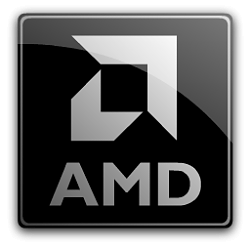Evolution of Gaming and AMD FreeSync Technology

Evolution of Gaming and AMD FreeSync Technology
Last Updated: 07 Mar 2024 at 15:16
Evolution of Gaming and Refresh Rates
In the fast-paced realm of gaming, technology is in a constant state of evolution. Before the introduction of variable refresh rate technologies like AMD FreeSync™, gamers often had to deal with screen tearing or increased input lag that traditional solutions like V-Sync imposed.
AMD introduced AMD FreeSync™ in 2015 to enable tear-free, stutter-free experiences, and when 60 Hz was considered great for gaming. Since then, games have become more demanding, graphics cards are much more powerful, while new display resolutions and technologies have become available for gaming.
Gaming monitors at 120 Hz were a rarity in 2015; today the majority of gaming monitors are 144Hz or higher, which clearly shows the upward refresh rate trend in the industry.
The Era of Immersive Gaming
Beyond refresh rates, gaming monitors have evolved in other ways to create more immersive experiences. The introduction of curved displays added a sense of depth, making players feel more connected to the action. Ultra-wide monitors expanded the field of view, offering a broader perspective that can be especially advantageous in competitive gaming.
HDR (High Dynamic Range) technology also made its mark, enhancing contrast and color accuracy to deliver more vibrant and lifelike visuals, and we introduced AMD FreeSync™ Premium Pro (HDR) technology certification in 2017 to guarantee color and luminance accuracy on certified displays.
The combination of higher refresh rates, adaptive sync, and improved display technologies has transformed gaming monitors into windows to stunning virtual worlds, blurring the line between reality and fantasy.
Evolution of AMD FreeSync™ and New Tier Requirements
Today, AMD FreeSync™ technology has become the largest gaming display ecosystem in the market with over 4000 certified displays. It works across a wide range of devices and platforms – TVs, monitors, notebooks, consoles – and supports DisplayPort™ as well as HDMI and USB connectors.
AMD FreeSync™ technology certification is a guarantee of a great experience and we want to keep it that way. Considering all the changes that took place in the gaming world since 2015, we have decided to update our FreeSync™ technology tier requirements in September 2023 to reflect the latest standards and technologies in gaming.
The updated AMD FreeSync™ technology tier requirements for Monitors and TVs are as below:
Notebooks Monitors and TVs FreeSync™ Max. Refresh Rate: 40-60 Hz < 3440 Horizontal resolution:
Max. Refresh Rate: ≥ 144 HzFreeSync™ Premium Max. Refresh Rate: ≥ 120 Hz < 3440 Horizontal resolution:
Max. Refresh Rate: ≥ 200 Hz
≥ 3440 Horizontal resolution:
Max. Refresh Rate: ≥ 120 HzFreeSync™ Premium Pro AMD FreeSync HDR on top of FreeSync™ Premium requirements. AMD FreeSync HDR on top of FreeSync™ Premium requirements.
For Monitors and TVs, the maximum refresh rates required for AMD FreeSync™ technology certification have been increased to reflect today’s best in class standards, and HDR requirements have been aligned with ecosystem specs.
Requirements for notebooks remain the same, and existing AMD FreeSync™ technology certified displays will continue to be supported.
Looking Ahead
With technologies like AMD FreeSync™ technology setting the stage, gamers can rest assured that the future will bring even more impressive gaming monitors that redefine the standards of visual quality, responsiveness, and immersion. As we reflect on the journey from 2015 to the present, one thing is clear: The evolution of gaming monitors is far from over.
Click to learn more about AMD FreeSync technology
Evolution of Gaming and AMD FreeSync™ Technology - AMD Community
Related Discussions



